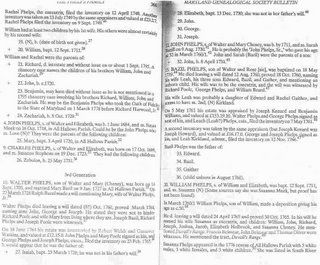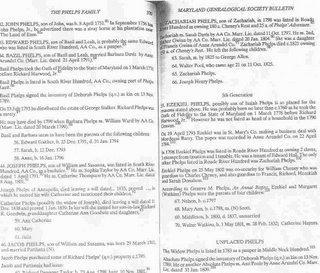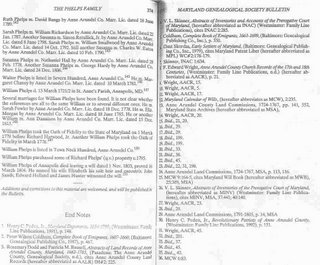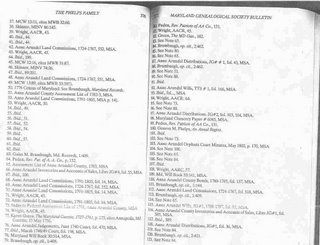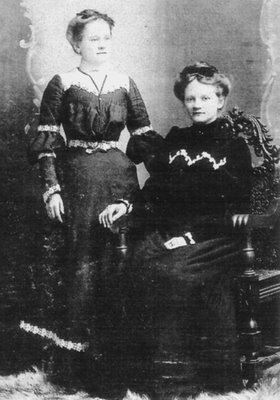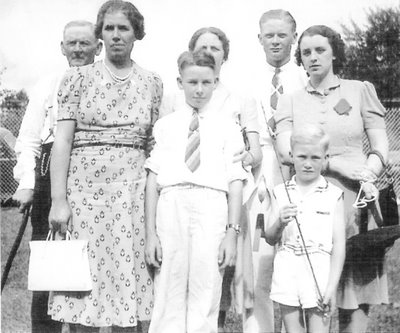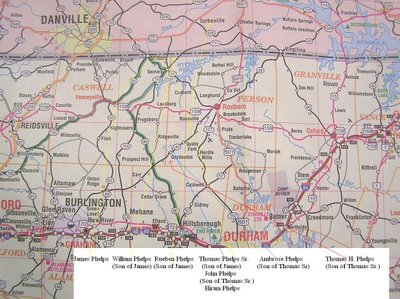



The following is based on research into the location of Thomas Phelps Sr. property in Person County, N.C., After his move from Caswell County, N.C. This will also shed some light on his oldest child, John Phelps, son from 1st wife Mary Pass (named as a grandson in Nathaniel Pass Sr.'s Will), and his two yougest children by his 2nd wife, Mary (Polly) McKissack, Martha Anne Phelps and James A. Phelps
I would like to wholeheartly thank Bruce Whitfield, who owns and lives today at the old homeplace and farm of James A. Phelps. He graciously has shared his knowledge of the old homeplace and the surrounding area, and with great patience has allowed me to use him as a sounding board, to answer numerous questions about his and adjoining properties. Bruce Whitfield purchased the farm from two daughters of James A. Phelps, Pearl Phelps Britt and Jewel Phelps Fuller.
The Photos are Property Plats and Maps showing location of Thomas Phelps Sr. and his descendants locations in Person County, N.C., from 1826 thru 1975.
We begin with Thomas Phelps Sr.'s first recorded deed in Person County, N.C. I am provided only abstracts from most deeds so as not to "bore" the reader with the continously repeated legalese that these old documents contain.
John Crisp to Thomas Phelps with James Terrell as Trustee John Crisp to Thomas
Phelps with James Terrell as Trustee
Person County, North Carolina
Land Deed November 1826
Book H Page 220
(Viz)
One tract or parcel of Land situate lying and being in the said County of Person
on the waters of the Double Creeks of South Hico, containing three hundred acres
and eighty five hundredths of an acre it being the Tract of Land conveyed by the
said John Crisp to the said Phelps by deed bearing even date herewith to which
deed reference is hereby made for a full description of the Tract of Land hereby
intended to be Conveyed.
Thomas Phelps---his mark
James Terrell---{Seal}
John Crisp---{Seal}
Test.
Thompson McKissack
Nicholas Hester
___________________________________________________________________________
Alexander Gray to John Phelps and Judith Phelps his wife.
John Phelps, Eldest son of Thomas Phelps Sr. and Mary Pass, married Judith Gray, daughter of Alexander Gray, July 10, 1828 in Person County, North Carolina, with Bondsman and Witness: John Pass (probably maternal uncle of John Phelps).
Person County, North Carolina
Deed Book K--Pages 354-355
April 4th, 1832
For and in consideration of one dollar to me in hand paid by the said John Phelps and his wife Judith---but more especially for the natural love and affection that I the said Alexander Gray doth bear to my daughter Judith Phelps--a certain tract of land---on the Waters of the Double Creeks and bounded as follows:
Beginning at an Ashe where I the said Alexander Gray & Drury Jones corner, thence West along said Jones line to a Maple, thence South to the line of a tract I have given this date to my son Bentley Gray, thence East to Moses Chambers line, thence North to a Black Oak, the beginning of the tract of land I have given to my son Laurence Gray, thence on Open line to the beginning. Containing One Hundred & Seventy-One Acres.
Alexander Gray---{Seal}
Witnesses:
John Douglas
Benjamin M. Davies
Nathaniel Norfleet
This property boundary is refered to the deed from Robert H. Hester to Thomas Phelps Sr. in 1837--- "thence South along said Phelps line twenty four chains and 80 links to a Red Oak Stump, thence East on yet his line forty two chains and fifty links to a White Oak, thence North on Jno. Phelps twenty chains and thirty links to a Maple". This 1847 deed also references---"Beginning at an Ash running thence North Seventeen chains and sixty links along Laurence Gray’s line". Laurence Gray was a son of Alexander Gray and the brother of Judith Gray. Another brother of Judith Gray was Bentley Gray, who witnessed the Marraige Bond of Thomas Phelps Sr. and Mary (Polly) McKissack on July 29, 1845.
___________________________________________________________________________
Robert H. Hester to Thomas Phelps Sr.
Person County, North Carolina
Land Deed April 8th 1837
Deed Book N Page 407
For and in consideration of the Sum of One hundred thirty five dollars 62 cents---Confirm unto the said Thomas Phelps a certain tract or parcel of Land, Situate lying and being in the County and State aforesaid on the waters of the Double Creeks of Hyco and bounded as follows.
Beginning at an Ash running thence North Seventeen chains and sixty links along Lawrence Gray’s line to Pointers, thence along the division line which is Robert H. Hester’s line, thence West forty six chains and fifty links to Pointers, Thence up said as it meanders to a White Oak on the West side, thence West on
Elg. Jones line seventeen chains twenty five links to blazed Pointers, thence South along said Phelps line twenty four chains and 80 links to a Red Oak Stump, thence East on yet his line forty two chains and fifty links to a White Oak, thence North on Jno. Phelps twenty chains and thirty links to a Maple, thence East yet his line thirty chains and fifty links to the beginning. Containing by Estimation One hundred Eighty four and ½ acres be the same more or less to have and to hold the aforesaid bargained & sold premises.
Robert H. Hester---{Seal}
Signed Sealed and Delivered
In the presence of:
Nathan Oakley
Wm. Evans
P.M. McMurray
-----------------------------------------------------------------------------------------
Robert H. Hester, (1811-1880) married Mary Collins and was a prominent citizen of the Bushy Fork area of Person County, N.C. He was was a son of Nicholas Hester (1786- ) and Elizabeth Hines and a grandson of Robert Hester (ca.1745- ). The Hester's Store area is named for this family.
Person County Heritage Book
Story# 559
ROBERT HESTER
The Hesters; have been in the Person County area since well before the county was formed. Robert Hester, born circa 1745, in addition to his land holdings was a miller. He had eight children of which Nicholas Hester was the line through which the Person County Hesters descended.Nicholas Hester, born in 1786, married Elizabeth Hines in the early eighteen hundreds. He moved from Person County to Caswell County after selling his oldest son, Robert H. Hester, 63 acres of land in Person County for the token sum of one dollar. The Nicholas Hester home place is located in Orange County near the intersection of highway 49 and 86, near the Caswell County line. He was a member of Wheeley's Primitive Baptist Church, having joined in 1824. He was appointed deacon in 1833. Some of Nicholas' personality can be seen in the church minutes which are available. He left the church in 1855 over a minor dispute and remained away for eighteen years. He asked to be restored to full fellowship in 1873.
Robert H. Hester remained in Person County. He was born in 1811. In 1834, at the age of 23 and already a land owner, he married his seventeen year old bride, Mary Collins. He became a successful merchant, farmer and statesman. He was elected as a senator from the county to the State Legislature four times. He later served as a Representative to the same body from 1856 to 1860. Robert Hester was a successful farmer. A measure of his success can be seen in his will. Even after living through the devastation of the Civil War, he was still a man of means at his death on May 17, 1880. Some insight into the man can be seen in a short character sketch written by Alexander A. Foushee in his Reminisencences Letter to the Courier, June 28, 1916:
"Robert H. Hester was a merchant, mill owner and one of our largest farmers and land owners. He was elected to the State Legislature several sessions, though he was not an office seeker. His was a case where the office sought the man and he was never defeated when he consented to accept a nomination, as he had the cor1fidence of the people, and I think, gave entire satisfaction to his constituents as a legislator. He was a Justice of the Peace for many years, a wise counsellor whose advice was often sought by his neighbors when in trouble. He raised a large and sterling family of children. He was a popular, highly esteemed and useful man."
_____________________________________________________________________________
Thomas Phelps Sr. deeded 147--3/10 Acres to Richard and Thomas H. Phelps
Richard and Thomas H. Phelps were his sons by 1st Wife, Mary Pass). He was now married to Mary (Polly) McKissack and they had daughter Martha Ann Phelps b. June 19, 1846, Martha's brother James A. Phelps was not born until February 20, 1848.
Person County, North Carolina
Deed Book Q--Pages 527-528
November 26, 1847
The sum of Two-Hundred & Seventy-Five dollars to him in hand paid by the said Richard & Thomas H. Phelps---a certain tract or parcel of land on the Waters of Double Creeks--adjoining Hester, Thompson, Jones--one boundary being--Up the Creek as it meanders.
Thomas Phelps---his mark
Witnesses:
Robert H. Hester
G. W. Brown
___________________________________________________________________________
In the Will of Thomas Phelps Sr., he leaves 50 Acres to son Richard (son from 1st wife Mary Pass) and the rest of his estate to 2nd wife Mary (Polly) Phelps and their children, Martha Ann Phelps and James A. Phelps. This remaining property in my opinion is the property refered to as the 80-some acres that is mentioned in the Deed of Trust of Mary (Polly)Phelps to Robert H. Hester, the Will of Martha Anne Phelps, The Will of James A. Phelps who left this property to his son Ralph P. Phelps, along with his sister Martha's interest in the property, as she was to have a home and provided for for life.
1880 Census, Person County,North Carolina, Bushy Fork Township
James A. PHELPS Self M Male W 32 NC Farming
Susan PHELPS Wife M Female W 40 NC Keeping House
Allice Y. PHELPS Dau S Female W 7 NC
Emma J. PHELPS Dau S Female W 4 NC
Daisey W. PHELPS Dau S Female W 2 NC
ONLY TWO HOUSEHOLDS AWAY IS JAMES A. PHELPS' MOTHER MARY
Mary PHELPS Self W Female W 75 NC Keeping House
Martha PHELPS Dau S Female W 30 NC
Mary J. PHELPS Dau S Female W 33 NC
Willie J. PHELPS GDau Female W 14 NC At School
Lucy MCKISSACK Sister S Female W 75 NC
James A. Phelps was still married to his 1st wife at this time, Susan C. Malone (b. July 20, 1848--d. February 17, 1890) daughter of Pomfrey Malone and Hettie Malone. His second wife mentioned in his Will was Mary (Mollie) J. Malone (b. June 26, 1857--d. October 2, 1936), daughter of John Malone and Elizabeth Malone.
Based on the close proximity of the two households and the other Wills and land records contained here, I conclude that this was part of the original lands of Thomas Phelps Sr. when he made his move from Caswell County to Person County, N.C. in the 1820's.
The above referenced documents will follow after the Last Will of Thomas Phelps Sr.
Thomas Phelps Sr.-Last Will and Testament
Person County Court June Term 1849
Will Book
I Thomas Phelps of the County of Person and state of North Carolina do make
and publish this my last Will and Testament,hereby revoking all others...
In the first place I desire that all my just debts shall be paid by my
executor as soon as may be convenient after my decease.
I give and bequeath to my daughter Elizabeth Phelps the sum of one hundred
dollars to her and her heirs forever.
I will and bequeath to my son Richard A. Phelps fifty acres of land with the improvements to be laid off in
the northwest corner of my land so as to include the dwelling house where the said Richard A. Phelps now resides and to adjoin the tract of land deeded by me to Thomas H. Phelps and Richard A. Phelps to hold to him and his heirs forever
And the rest and and residue of my estate both real and personal, I desire and so will that it shall remain in the possession of my wife Polly Phelps to be used and employed by her under the advice and discretion of my executor, herein after named, for her own support and maintenance and also to enable her to raise, educate, and support, free of charge, my two youngest children--To Wit, Martha Phelps and James Phelps until the shall arrive at lawful ages.
Then my will and desire is that all my property mentioned in this bequest as such first an shall be remaining shall be equally divided between my wife Polly Phelps, and to my two children Martha Phelps and James
Phelps, and in case my wife should marry before my said children shall arrive at the age of twenty one years,Then I direct that the desire above named shall take place immediately.
I hereby nominate and appoint my son Richard Phelps executor of this my last Will and Testament. An Witness thereof I have hereunto set my hand and seal this ninth of December 1848.
Thomas Phelps---his mark
In Presence of :
Wm. Whitfield James O. Bradsher
______________________________________________________________________________
Mary (Polly) McKissack--(b. Aug. 19 1806 - d. Nov. 17 1892)--2nd Wife of Thomas Phelps Sr., Son of James Phelps, who moved from Caswell County to Person County in the late 1820's.
Person County, North Carolina
Deed Book S--Pages 359-360
Deed of Trust--Mary Phelps indebted to Robert H. Hester & Son and Berdnard Russell, with Robert O. Toryan as surety, March 20th, 1858
Whereas the said Mary Phelps is justly indebted to R. H. Hester & son in the sum of Ninety-Two dollars & sixteen cents due by note and account, also to Berdnard Russell in the sum of Fifty-Five dollars, as security due by note, which said debts due as aforesaid from the said Mary Phelps---In consideration of the sum of One dollar paid to the said Mary Phelps by Robert O. Toryan, the said Mary Phelps hath sold to Robert A. Torian the following named property.
Her lifetime interest in Eighty-Four Acres of land, lying on the Waters of Double Creek, adjoining the lands of R. H. Hester and others, Two Cows & Calves, One Sow and Nine Shoats, One Clock, One Beaureau,
Two Beds & Furniture, One Bay Horse, One Loom. My interest in what tobacco we now have on hand.
That if the said Mary Phelps shall fail or omit to pay and satisfy fully the aforesaid named debts---on or before the Second day of April next---the said Robert A. Torian shall proceed to sell the before named property for ready money, after giving at least ten days notice of the time and place of the sale at three or more public places in the County aforesaid and the proceeds arising from the sale---the said Robert A. Torian shall first apply to the payments of the debts due---and the residue or surplus, if any there should be, after making such payments, the said Robert A. Torian shall pay over to the aforesaid Mary Phelps, her heirs or assigns.
Mary Phelps---{Seal}
R. A. Torian---{Seal}
Witness: Albert Yarborough
Person County, North Carolina
Clerk's Office March 22, 1858
Th Execution of the foregoing Deed in Trust was duly proven before me by the oath of Albert Yarborough, a Subscribing Witness thereto. Let the same be Registered.
Charles Mason--Clerk
By James Wright--Dep. Clk
________________________________________________________________________________
Martha A. Phelps -- (b. 19 Jun 1846 - d. 15 Feb 1926)--Last Will and Testament--Daughter of Thomas Phelps Sr. and 2nd Wife, Mary (Polly) McKissack
Person County, North Carolina
Will Book 21 Page 132
North Carolina, Person County. I, Martha A. Phelps, of said state and county, being of sound mind and memory, but considering the uncertainty of my earthly existence, do Make and declare this my last will and testament, hereby revoking any and all other heretofore made by me:
1. My executor, hereinafter named, shall give my body a decent burial, suitable to the wishes of my family and friends, and pay all funeral expenses, together with all my just debts, out of the first money that may come into his hands belonging to my estate.
2. 1 give and devise to my nephew, Ralph P. Phelps, in fee simple all of my interest, right and title in and to the following tract of land in said state and county, Bushy Fork Township, adjoining the lands of the estate of Q.A. Morton on the North, Charlie Vernon on the East, Walter Bradsher on the South, J. A. Phelps on the South also, and the lands of the estate of Q A. Morton on the West, containing 87-1/2 acres, more, or less, the other interest in said tract of land being owned by my brother, Jas. A. Phelps.
3. I give and devise to my niece, Willie J. Pettigrew, wife of J. R. Pettigrew, for the term of her life and no longer, ?the house and lot which own in the Town of Roxboro, N. C., on Morgan Street, said lot having been conveyed to me by W. J. Pettigrew and others by deed dated May 14th, 1912, and registered of Deeds office for Person county in Book 21 page 289, and at the death the said Willie J. Pettigrew said house and lot shall go to Bessie Pettigrew Cushwa, wife of G. J. Cushwa, and John Schaub Pettigrew, children of Willie J. Pettigrew in fee simple, each to have an undivided one?half interest in same.
4. 1 hereby constitute and appoint my nephew, Ralph P. Phelps, executor to this my last will and testament.
In Winess whereof, I the said Martha A. Phelps, do hereunto'my hand and seal this the 11th day of December, 1920.
Martha A. Phelps {Seal}
Witnesses: E. G. Long
G. S. Brooks
____________________________________________________________________________________________________________________
James A. Phelps-- (b. 20 Feb 1848 - d. 31 Mar 1926)-- Last Will and Testament, Son of Thomas Phelps Sr. and 2nd Wife, Mary (Polly) McKissack.
Person County, North Carolina
Will Book 21 Page 183-184
I, James A. Phelps of the aforesaid County and State, being of sound mind and memory, but considering the uncertainty of my earthly existence, do make and declare this my last will and testament:
1. My executrix and executor, hereinafter named, shall give my body a decent burial, suitable to the wishes of my family and friends, and pay all funeral expenses together with all my just debts out of the first money which may come their hands belonging to my estate.
2. 1 give and devise to my beloved wife Mollie J. Phelps for the natural life, and no longer, my tract of land in Bushy Fork Township, Person County, North Carolina, containing two hundred (200) acres more or less being the place where John Clayton now lives, and the dwelling house and lot and the vacant lots owned by me in the Town of Mebane, North Carolina, upon which we now live. I also give to her for her use and enjoyment for the term of her life all of my household and kitchen furniture. But it Is hereby expressly stipulated and provided that my three children, Ralph P. Phelps, Jewel E. M. Phelps and Pearl Phelps Britt, shall have a home with my said wife so long as they may desire to do so.
3. I give and devise in fee to my three children, Ralph P. Phelps, helps and Pearl Phelps Britt, at the expiration of the life estate of my wife Mollie J. Phelps therein, my dwelling house and lot and all my vacant lots in the Town of Mebane, North Carolina, share and share alike.
4. 1 give and devise in fee to my two daughters, Jewel E. M. Phelps Britt, at the expiration of the life estate of my wife Mollie J. Phelps therein, the tract of land in Bushy Fork Township, Person County, North containing 200 acres more or less. I give also to said two daughters all of the personal property mentioned in item 2 hereof given to my wife for the term of her life, or so much thereof as may be remaining at the time of her death.
5. 1 further give and devise in fee to my two daughters, Jewel E. M. Phelps and Pearl Phelps Britt, the one acre tract of land, with three houses thereon, located in Reamstown in the Town of Roxboro, N. C.
6. 1 give and devise in fee to my son, Ralph P. Phelps, the tract of land in Bushy Fork Township, Person County, North Carolina, containing sixty-nine (69) acres, more or less, which I purchased from J. O. Bradsher, and also the tract of land in said township, county and state, containing eighty-eight and one-half (88-1/2) acres, more or less, which is owned equally by my sister, Martha Phelps, and myself. 1 am devising the one-half interest of my said sister in this tract of land for the reason that she has made her home with me for many years, and in consideration of the further fact that I am providing for her a home with my wife as long as she may live. And it is hereby expressly stipulated and provided that my said son.Ralph P. Phelps, shall support and maintain my said sister, Martha Phelps in a comfortable manner as long as she lives.
7. 1 give and devise in fee to my three daughters, Alice Warren, Emma Burch and Daisy Bradsher, my Malone Tract of land, lying and being in Bushy Township, Person County, North Carolina, containing fifty-seven and one half (57-1/2) acres more or less.
8. It is my will that the insurance money to be received at my death under the policy on my life shall be divided equally among my wife and six children, each to receive one seventh.
9. 1 give and devise the residue of my personal property and money after the payment of my debts and the special devises made herein, to my son, Ralph P. Phelps, and my two daughters, Jewel E. M. Phelps and Pearl Phelps Britt, one third to each. I exclude my three daughters, Alice Warren, Emma Burch and Daissy Bradsher from participating in the residue of my personal property and money for the reason that I have already given Nine Hundred ($900.00) Dollars to Alice Warren, One Thousand ($1000.00) Dollars to Emma Burch, and One Thousand ($1000.00) Dollars to Daisy Bradsher.
10. It is my will, and It is hereby expressly provided, that my sister, Martha Phelps, shall have a home with my wife, Mollie J. Phelps, as long as she may live.
11. 1 hereby constitute and appoint my wife, Mollie J. Phelps, executrix, and my son, Ralph P. Phelps, executor to this my last Will and Testament, hereby revoking and declaring void any and all wills heretofore made by me, and my said executrix and executor shall not be required to give bond.
In Witness Whereof, I, the said James A. Phelps, do hereunto set my hand and seal, this the 24th day of September, 1925.
J. A. Phelps---{Seal}
Signed, sealed, published and declared by the said James A. Phelps to be his last Will and Testament in the presence of us, who, at his request and in his presence and in the presence of each other, do subscribe our names as witnesses thereto.
Thomas C. Carter
Joseph H. Hurdle
NORTH CAROLINA
ALAMANCE COUNTY.
I, D. J. Walker, Clerk of the Superior Court in and for the aforesaid County and State do hereby certify the foregoing to be a true and accurate copy of the last Will and Testament of James A. Phelps as same is taken from and compared with the original this day duly admitted to probate and filed in this office in accordance with law.
Witness my hand and official seal, done in office at Graham, this April 15, 1926.
D. J. Walker, C.S.C. {Seal}
_____________________________________________________________________________________________________________________
James A. Phelps---Land Deeds, Person County, N.C.
December 2nd, 1872
Deed Book CC--Pages 536-537
George A. Broach and wife Mary A. Broach and Calvin Brown and wife Elizaberth Brown----To James A. Phelps, for $256.00, 64 Acres, on the Waters of South Hyco.
Beginning at the Meeting house and on J. O. Bradshers line, Lucy Woods corner, thence running North with J. O Bradsher's corner, in Mary Phelps line, thence West with Mary Phelps line to and old pine stump, James O. Bradsher's corner, thence South with James O. Bradsher's line to James O. Bradsher's corner, thence South with James O. Bradsher's line to the Meeting house line, to the Meeting house road, thence East with the said road to the beginning.
---------------------------------------------------------------------------------------------------------------------------------------------------------
November 29th, 1883
Deed Book CC--Pages 549--550
J. S. Merritt, Commissioner---To James A. Phelps, for $550.00, 30 Acres
That whereas an exparte petition was brought in the Superior Court of Person County, N.C. by W. A. Jincey?, Guardian for Laura E, Jesse L. and Sally N. Marshall, infants for the purpose of selling a parcel of land hereinafter described and belonging to said infant Wards, who are residents of the State of Arkansas and whereas by virtue of said petition, J. C. Pass, Clerk of the Superior Court of said County and State, did on the first day of September, 1883, order the Sale of said land to be made at the Courthouse to the highest bidder for cash, when and where J. H. Henry become the purchaser as the last and highest bidder at the sum of Five Hundred and Fifty dollars, and said sale has been in all respects confirmed and letter ordered to be made. And whereas said J. H. Henry has assigned and transferred his said bid to James A. Phelps, the party of the second part to this Indenture,--in consideration of the sum of $550.00.
Adjoining the lands of Thomas Broach on the West, Nathaniel Broach on the North, Miss Zilphia Broach on the East, and the lands of the Widow Wm. Marshall on the South. It being the lot of land alloted Harriet A. Marshall in the estate of Richard Broach, Deceased and situated about 2 miles South of Hester's old Store.
J. S. Merritt, Commissioner---{Seal}
Test: J. H. Henry
North Carolina
Person County
The examination of the foregoing deed was this day duly acknowledged before me by J.S. Merritt, Commissioner, The Grantor. Let the deed with this certificate be registered. Witness my hand this January 7th, 1886
John C. Pass---Clerk of Court
Registered January 8th, 1886
F. P. Satterfield--P.R.
---------------------------------------------------------------------------------------------------------------------------------------------------------
December 29th, 1886
Deed Book EE--Pages 351-352
Elizabeth Malone and Turner Malone---To James A. Phelps, for $350.00 (one hundred and seventy five dollars each), 53 Acres, on the Waters of Hyco.
Adjoining the lands of W. A. Warren, Nathaniel Broach, B.F. Hester and others and known as the Hettie C. Malone Tract--being 2/5 of whole by inheritance Elizabeth Malone and Turner Malone, being lawful heirs of the said Hettie C. Malone
Elizabeth Malone---{Seal}
Turner Malone-----{Seal}
Witnesses: James O. Bradsher
J. S. Coleman
----------------------------------------------------------------------------------------------------------------------------------------------------------------
July 2nd, 1888
Deed Book GG--Pages 549 and 552 ---(Pages 550 and 551 out of sequence concerning other individuals deeds)
J. L. Brooks and wife Martha---To James A. Phelps, for $925.00, 100 Acres
Adjoining the lands of Thomas B. Broach on the South, on the West by Widow Marshall, on the North and East by Calvin Hester and others.
Beginning at a small Dogwood on John Crisp's line, thence West a marked line to a Branch, thence down the said Branch as it meanders to a Sourwood and corner on Marshall's line, thence North his line to a Branch formerly known by the name of Moses Branch, thence East of North with said branch McNeal's line, thence McNeal's line East to a Pine corner, thence South, John Crisp's line to the first station.
J. L. Brooks---{Seal}
M. W. Brooks---{Seal}
--------------------------------------------------------------------------------------------------------------------------------------------------------------
WRITTEN AND TRANSCRIBED BY: Latham Mark Phelps August 2006


